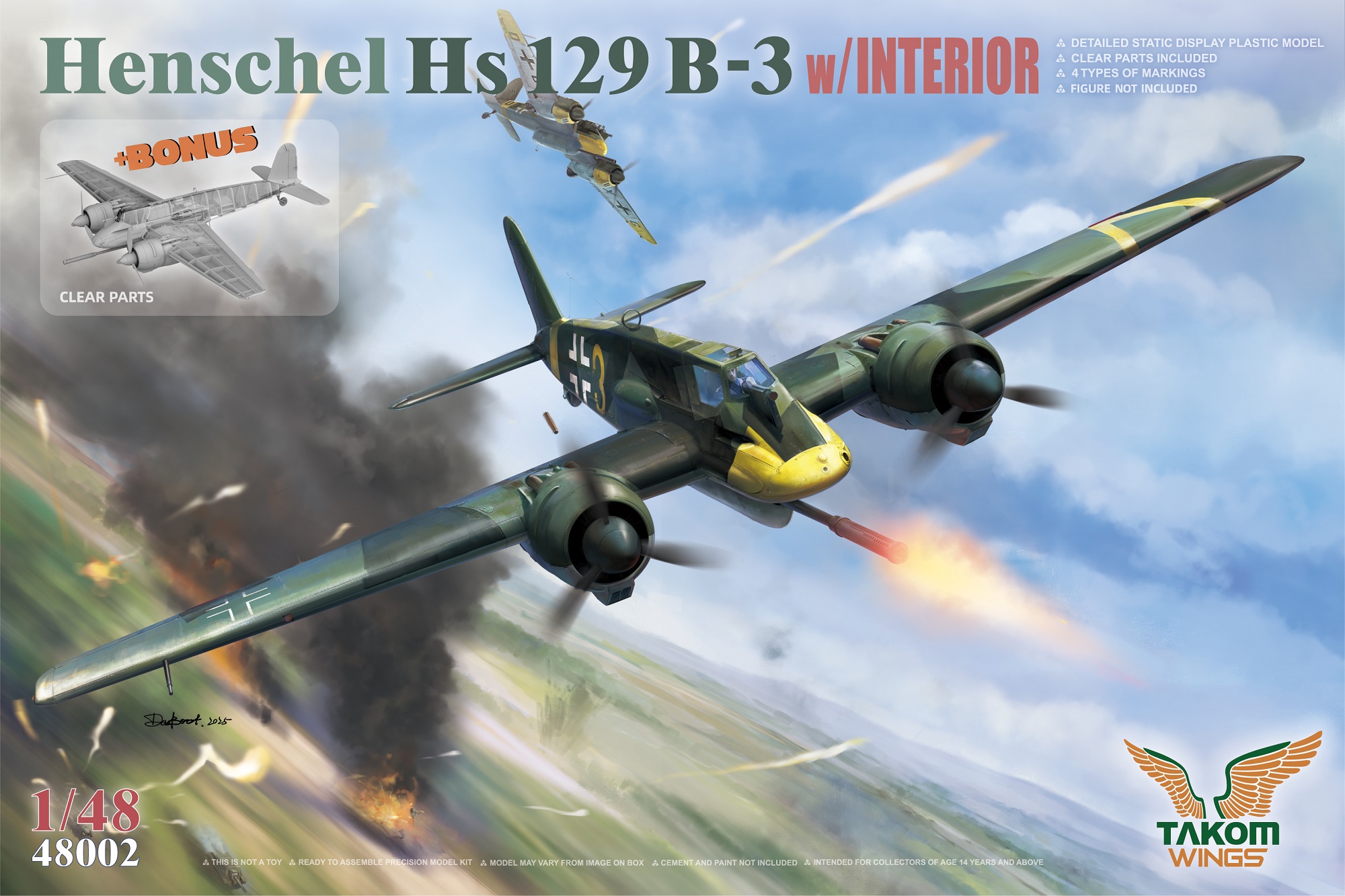
Henschel Hs 129B-3
The Hs 129 was developed to fulfil the roles of close-air-support and ground-attack for the Luftwaffe in WWII. After the experiences of the Condor legion during the Spanish Civil War, German analysts concluded that the Luftwaffe needed a specialized aircraft to engage targets on the ground. Henschel put forward a design in 1937 as the sturdy Hs 129 V1 prototype, which was built at Schoenfeld. The airframe was constructed of aluminum, with steel armor plates attached to protect the engines and tiny cockpit, which was protected from the front by a plate of 75mm armored glass. This prototype was powered by a pair of Argus AS 410A-0 engines and began flight tests in May 1939. Another prototype, Hs 129 V2, was completed but crashed within a couple months of testing in January 1940.
Fourteen pre-production Hs 129 A-0’s were rushed into service in France, but poor performance prevented the Hs 129A series from entering full production. The cockpit was modified to improve visibility, and the engines were replaced with captured French 700hp air-cooled Gnome-Rhône 14M 4/5 14-cylinder radial engines, resulting in the Hs 129B series. Standard armament consisted of two 20mm Mg 151 cannons and two 7.9mm MG 17 machine-guns, with provision for a light bomb to be mounted under the fuselage. This new series was sent into battle primarily in the anti-tank role on the Eastern Front and North Africa.
Advancing Soviet tank designs required heavier firepower, resulting in the Hs 129B-2 series, which entered service early in 1943. The Hs 129B-2/R1 was armed with two 20mm MG 151/20 cannons and a pair of 13mm MG 131 machine guns, and the Hs 129B-2/R2 introduced an additional 30mm Mk 103 cannon mounted centrally under the fuselage. The Hs 129B-2/R3 omitted the two MG 13’s, which were replaced in favor of a 37mm BK 3,7 cannon. The Hs 129B-2/R4 was armed with a 75mm PaK 40L cannon pod mounted under the fuselage.
The final production variant was the Hs 129B-3, which was developed from the Hs 129B-2/R4. This variant was armed with an automatic electro-pneumatic 75mm BK 7,5 cannon fitted with an aerodynamic muzzle break and a 12-round autoloader. This was the heaviest and most powerful gun to be mounted on any aircraft in WWII, but its weight caused a decrease in the general performance of the aircraft and rendered it inferior to its predecessors. A total of 866 Henschel Hs 129Bs were built before production ceased in the summer of 1944.